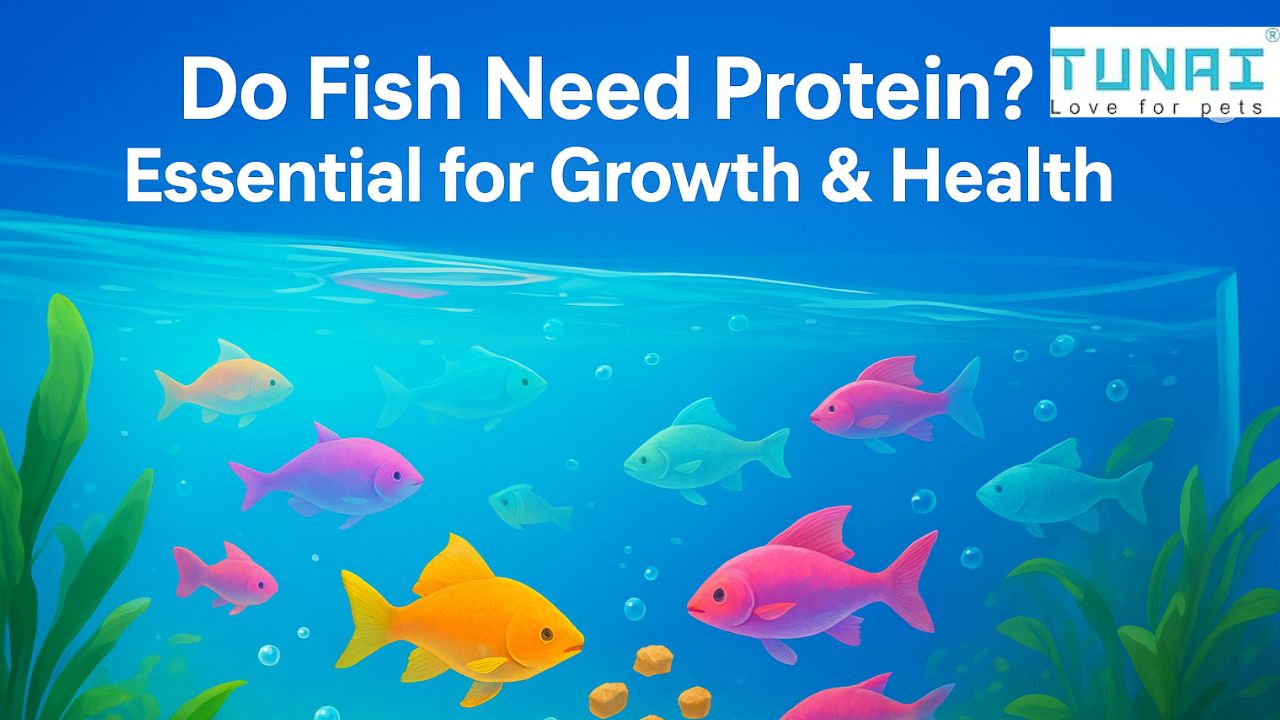
The Essential Guide to Fish Protein: Why Fish Need Protein for Peak Health in India 🌟
Protein isn’t just “food” for fish it’s the engine behind everything they do. In India, where aquaculture and fish farming are not just hobbies but livelihoods, understanding why fish need protein and how to provide it consistently can mean the difference between thriving, vibrant fish and weak, slow-growing ones.
Let’s break it down in simple terms and show you practical tips for keeping your fish healthy, happy, and growing fast.
Why Protein is the Secret to Healthy Fish :
Protein is made up of essential amino acids like lysine and methionine, which are the building blocks for all living tissue. Fish are incredibly efficient at using protein, but if they don’t get enough, the results can be serious.
1️⃣ Fuelling Growth and Development
Indian carp species like Rohu, Catla, and Mrigal grow quickly, especially when young. Protein is essential for:
- Building blocks: Bones, scales, fins, and organs all need amino acids.
- Optimal growth: Studies show diets with 35–45% protein boost growth in Rohu and Tilapia.
- Avoiding stunted growth: Lack of protein leads to slower growth and lower market value for farmers.
Tip: For species-specific feeds and optimized setups, check out TUNAI.IN.
2️⃣ Supporting Muscles and Tissue Repair
Active fish like Surmai (Seer Fish) or common aquarium fish like Goldfish need strong muscles for swimming and survival.
- Muscle health: Protein builds actin and myosin, which keep muscles functional.
- Faster healing: A protein-rich diet helps fish recover quickly from stress or injury, which is especially important in crowded ponds or tanks.
3️⃣ Boosting Immunity
Protein is the backbone of the immune system. Fish need it to produce antibodies and white blood cells to fight off diseases like White Spot Disease (Ich/Ick).
- The risk: Fish on low-protein diets (<20%) can have up to 40% higher infection rates.
- Prevention: High-quality protein keeps fish strong and reduces costly disease treatments.
Tip: Explore TUNAI.IN's immune-boosting supplements for sensitive aquarium fish.
4️⃣ Energy and Metabolic Support
While fats and carbs are the main energy sources, fish can turn extra protein into glucose during fasting or high-activity periods, like spawning. This makes balanced protein intake crucial for endurance.
How Much Protein Does Your Fish Need?
Not all fish are the same. Their protein requirements depend on their diet type:
| Fish Type | Examples (India) | Protein Needed | Key Focus |
| Carnivorous | Bettas, Oscars, Arowanas, Surmai | 40–50% | Animal-based protein for muscle growth and hunting activity. |
| Omnivorous | Goldfish, Koi, Rohu, Catla | 30–40% | Mix of animal and plant proteins for balanced nutrition. |
| Herbivorous | Plecos, Mrigal, Mollies | 20–30% | Mostly plant proteins to avoid digestive issues. |
Top Protein Sources for Fish
A varied diet keeps fish healthy and happy. In India, there are plenty of affordable, high-quality options:
1️⃣ Natural & Live Foods
- Bloodworms, Brine Shrimp, small Prawns (Jhinga): 50–70% protein and packed with essential fatty acids.
- Great for both nutrition and enrichment, mimicking natural hunting behaviour.
2️⃣ Commercial Feeds
- Pellets and flakes often provide 35–45% protein from fish meal, krill, or spirulina.
- Floating vs. sinking: Choose based on whether your fish feed at the top or bottom.
- Avoid fillers: Skip brands loaded with rice bran or maize, which dilute protein content
Tip: TUNAI.IN offers high-quality, specialized feeds for different fish species.
3️⃣ Plant-Based & Sustainable Options
For omnivorous and herbivorous fish, local ingredients can work wonders:
- Soybean Meal (44–48% protein)
- Groundnut Oil Cake (35–42% protein)
- Azolla (nutrient-rich aquatic fern)
Common Mistakes to Avoid
| Mistake | How to Fix It |
| Feeding the same food all the time | Rotate feeds weekly for a complete amino acid profile. |
| Ignoring water quality | High-protein diets create more waste—use strong filtration and do 25% weekly water changes. |
| Overfeeding | Feed 2–5% of body weight daily to avoid obesity and water pollution. |
| Ignoring temperature | Reduce protein in cooler months and increase during warmer months (around 24°C/75°F). |
Tip: Use a fish food calculator or consult experts like CIFA to adjust portions accurately.
Do fish need protein? Absolutely. It’s the fuel for growth, immunity, energy, and overall vitality. Give them the right protein, and your fish will thrive in any Indian aquaculture or aquarium setup.






